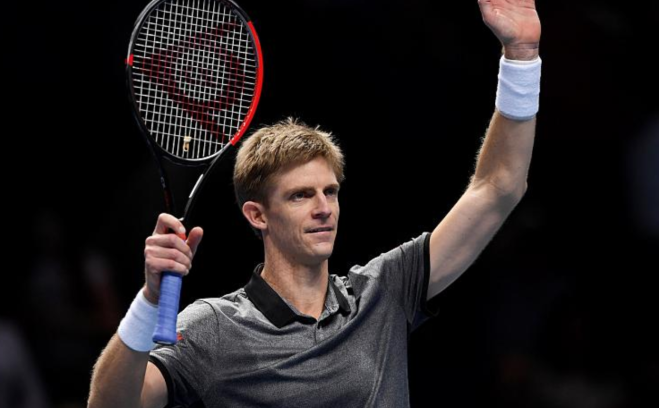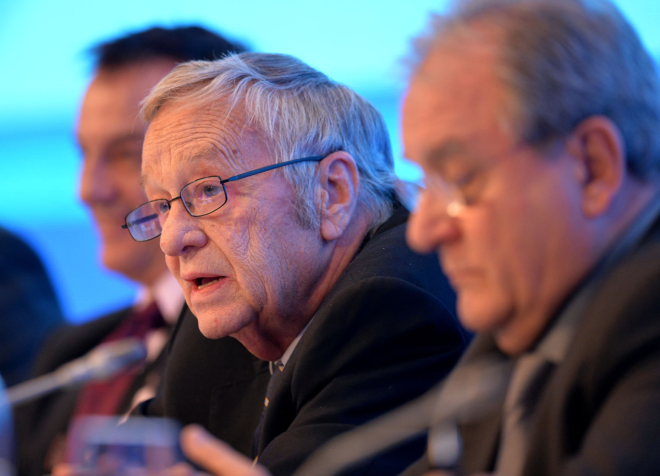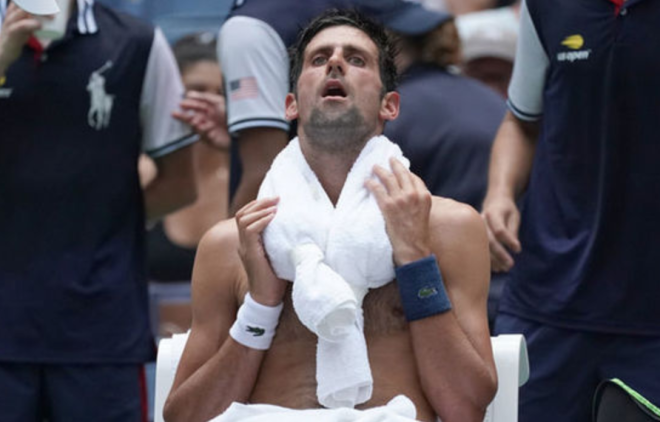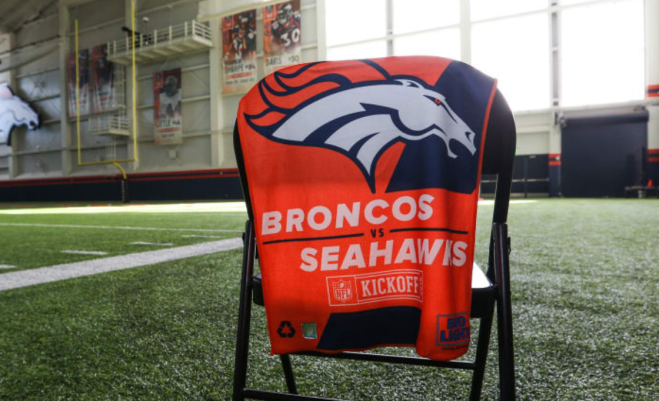In a TGIF GSB News & Notes, we share two positive news stories and one naggingly troubling if still hopeful note.
On the positive side, Kevin Anderson, the world’s fifth ranked men’s tennis player, took on the plastic waste issue in Jon Wertheim’s SI.com much-read mailbag column. And the Seattle Sounders used the term “climate crisis” (Italics my emphasis) when they announced their commitment to going carbon neutral in the season that kicks off on March 2. I’ve never seen a team put the words “climate” and “crisis” together before.
On the flip side, despite many calls for his resignation, Gian-Franco Kasper remains the President of the International Ski Federation (FIS) almost three weeks after he outed himself as a climate change denier. But an effort to generate public pressure to force his resignation, led by Protect Our Winters, shows no signs of slowing down.
KEVIN ANDERSON, WORLD’S 5TH RANKED TENNIS PLAYER, SERVES UP PLASTIC OCEAN WASTE TO SI.COM READERS
South Africa’s Kevin Anderson instantly became one of the world’s most well-known eco-athletes on Wednesday when he took on the plastic ocean waste issue — and tennis’ contribution to it — in Jon Wertheim’s popular SI.com mailbag column.
I know what you’re thinking: “Wait, who is Kevin Anderson? And how popular is tennis, really?”

Kevin Anderson (Photo credit: Tony O’Brien/Reuters)
The hard-serving, 6′ 8″ Anderson is currently the fifth ranked men’s player in the world¹, having reached the finals of two grand slam tournaments since 2017. You might remember this incredible left-handed shot (Anderson is a righty) after having tumbled to the grass late in his marathon, 6 hour-plus 2018 Wimbledon semifinal vs. John Isner that propelled him to the final.
As to tennis’ popularity, a 2018 WorldAtlas.com study reports that the sport has 1 billion fans globally, enough to make it the fourth most popular sport on the planet, trailing only soccer (#1 at 4 billion fans), cricket (2.5 billion), and field hockey (2 billion). To my knowledge, the only active eco-athlete who be more well known than Anderson is Mesut Özil, the German soccer star who currently plays for Arsenal.
Back to Wertheim’s mailbag.
The first question came from a reader in Toronto who asked, “When is tennis going to stop its environmentally unfriendly use of plastic?”
Instead of answering it himself, Wertheim gave Anderson, “tennis’ green czar” (who knew??), the court.
An excepted version of Anderson’s reply reads this way:
That your question was submitted to Jon Wertheim’s mailbag makes me very pleased to know that tennis fans are also taking the plastics issue seriously.
Reducing plastic pollution — and particularly keeping plastic waste out of the oceans — is one of my biggest passions. In fact, in December I hosted a charity event at home in Florida with a portion of the proceeds benefitting Ocean Conservancy’s Trash Free Seas Alliance. Once your eyes are opened to the plastic pollution problem, it’s hard not to care about the consequences. I hope that tennis players can be leaders in this space to raise awareness and help make the public more mindful of reducing single-use plastics when possible.
As a member of the ATP Player Council, I’ve been sharing my passion for this issue and last November, the ATP developed measures to reduce its negative impact on the environment at the Nitto ATP Finals in London. For the first time ever, players were given reusable bottles for on-court use, staff were given reusable bottles and encouraged to refill them at water stations, and fans were given reusable cups when they purchased drinks at The O2 (Arena). There are many more things that can be done in the future, but I believe this was a great first step in the right direction.
I’m hopeful we can continue to make other changes, such as do away with plastic racquet bags after re-stringing (which I always politely decline or make sure to recycle), put recycling bins at all tournaments for fans to dispose of their rubbish properly (and on the practice courts for players), and most importantly – provide education. If we can get more and more tournaments, players and fans to recognize the issue we have on our hands, and just how dire of a situation it is, we can make more change.
GSB’s Take: So glad to hear Kevin Anderson is leading the anti-plastic ocean waste movement on the ATP Tour. Hopefully he is recruiting others, including his women’s tennis counterparts, to join his effort. And if his interest in plastic waste becomes an on-ramp to a broader commitment to the climate change fight, all the better.
SEATTLE SOUNDERS, MLS’ FIRST CARBON NEUTRAL CLUB, USES “CLIMATE CRISIS” TERM
The Seattle Sounders committed to going carbon neutral starting with the 2019 season — FC Cincinnati visits CenturyLink Field on March 2 to kick off the new campaign — marking them as the first professional soccer team in North America to do so. In a press release announcing the move, the club pledged that their “operations will make no net contribution to atmospheric carbon dioxide, the leading cause of the climate crisis.”
Wait a second.
Did you notice anything special in that press release quote? Because I sure did.
A North American pro sports team, used the term “climate crisis.”
At first glance, the Sounders’ use of climate crisis should not raise eyebrows. After all, a UN Intergovernmental Panel on Climate Change (IPCC) study released in October said that humanity has but 12 years to cut carbon pollution by 40 percent if we are to avoid catastrophic consequences.
But widen the lens a bit and one sees that most pro teams, including those who have done great green work for years, do not even speak of climate change. At all. Benign terms like “sustainability” and “environmentally responsible” are used much more frequently.
It says here that the Sounders use of climate crisis is at least as big a deal as the team going carbon neutral.
And that’s saying something because the club’s carbon neutral commitment is certainly important and substantive.
One reason is that the Sounders included fan travel to and from games — which represent 28 percent of total emissions — in its calculations. Some teams and leagues that have claimed carbon neutrality have not done so.

Fan travel accounted for 28 percent of the Sounders’ emissions in 2018, trailing only team travel (33 percent) and CenturyLink Field operations (29 percent)
Team management partnered with Seattle-based Sustainable Business Consulting to calculate its greenhouse gas emissions and develop plans to reduce its impacts where possible. For emissions unable to be eliminated – such as team travel for matches, scouting and other business – the Sounders are offsetting their emissions through the Evergreen Carbon Capture (ECC) program of Forterra, a regional nonprofit. Using the club’s contribution to ECC, Forterra and its partner DIRT Corps are joining with the team and fans to plant hundreds of trees in a part of the region that needs added tree cover. This not only reduces CO₂, but enhances air and water quality.
“We’re incredibly excited to announce that our club is officially carbon neutral,” said Sounders Owner Adrian Hanauer. “The Sounders have always been committed to investing in our community, and that includes recognizing the immense responsibility we have as environmental stewards.”
And climate crisis fighters.

Adrian Hanauer, owner of the Seattle Sounders (Photo credit: Seattle Sounders FC)
GSB’s Take: This is a win-win-win Green-Sports story if I ever saw one: Win #1: The Sounders go carbon neutral. Win #2: The club includes fan travel in their emissions calculations. Win #3: Rightfully calling climate change a CRISIS is a big step forward. Kudos to the Sounders for doing so. Will this give other pro teams across all sports the confidence to use the words “climate” and “change” together? Watch this space. Note that I’m starting slowly here and not asking teams to say climate “crisis”. Yet. If you want to let the Sounders know that you appreciate their bold green-sports steps, click here.
CLIMATE DENIER GIAN-FRANCO KASPER REMAINS IN POWER AS HEAD OF INTERNATIONAL SKI FEDERATION;
We close the week with an update on the Gian-Franco Kasper story.
The President of the International Ski Federation (FIS) denied climate change in a February 4 interview, saying, “There is no proof for it. We have snow, in part even a lot of it. I was in Pyeongchang for the Olympiad. We had minus 35 degrees C. Everybody who came to me shivering I welcomed with: welcome to global warming.”

Gian-Franco Kasper, President of FIS (Photo credit: Mark Runnacles, Getty Images)
Protect Our Winters, the nonprofit made up of elite winter sports athletes who advocate on behalf of systemic political solutions to climate change, quickly wrote an open letter calling for Kasper to resign and encouraged its followers to do the same.
As of February 19, over 8,300 letters had arrived in FIS’ in box.
But that’s not all.
- Jessie Diggins, who won Olympic gold at Pyeonchang 2018 in cross country skiing, and other elite winter sports athletes like Jamie Anderson, Danny Davis, and Maddie Phaneuf, made strong statements condemning Kasper’s remarks.
- Companies from throughout the snow sports world — from Aspen Skiing Company to Burton, from Patagonia to Clif, and more — pushed the word out
- The coverage of POW’s open letter generated more than 200 million media impressions worldwide: The New York Times, ESPN and The Daily Mail, among many others, got into the act.
Now, as of February 21, Kasper remains in office. But for how long will that be the case?
GSB’s Take: The POW letter campaign is ongoing. If you believe Kasper should go and would like to participate, click here.
¹ Anderson currently sits below #1 Novak Djokovic, #2 Rafael Nadal, #3 Alexander Zverev, and #4 Juan Martin del Potro in the ATP rankings. He is ahead of #6 Kei Nishikori and #7 Roger Federer.



